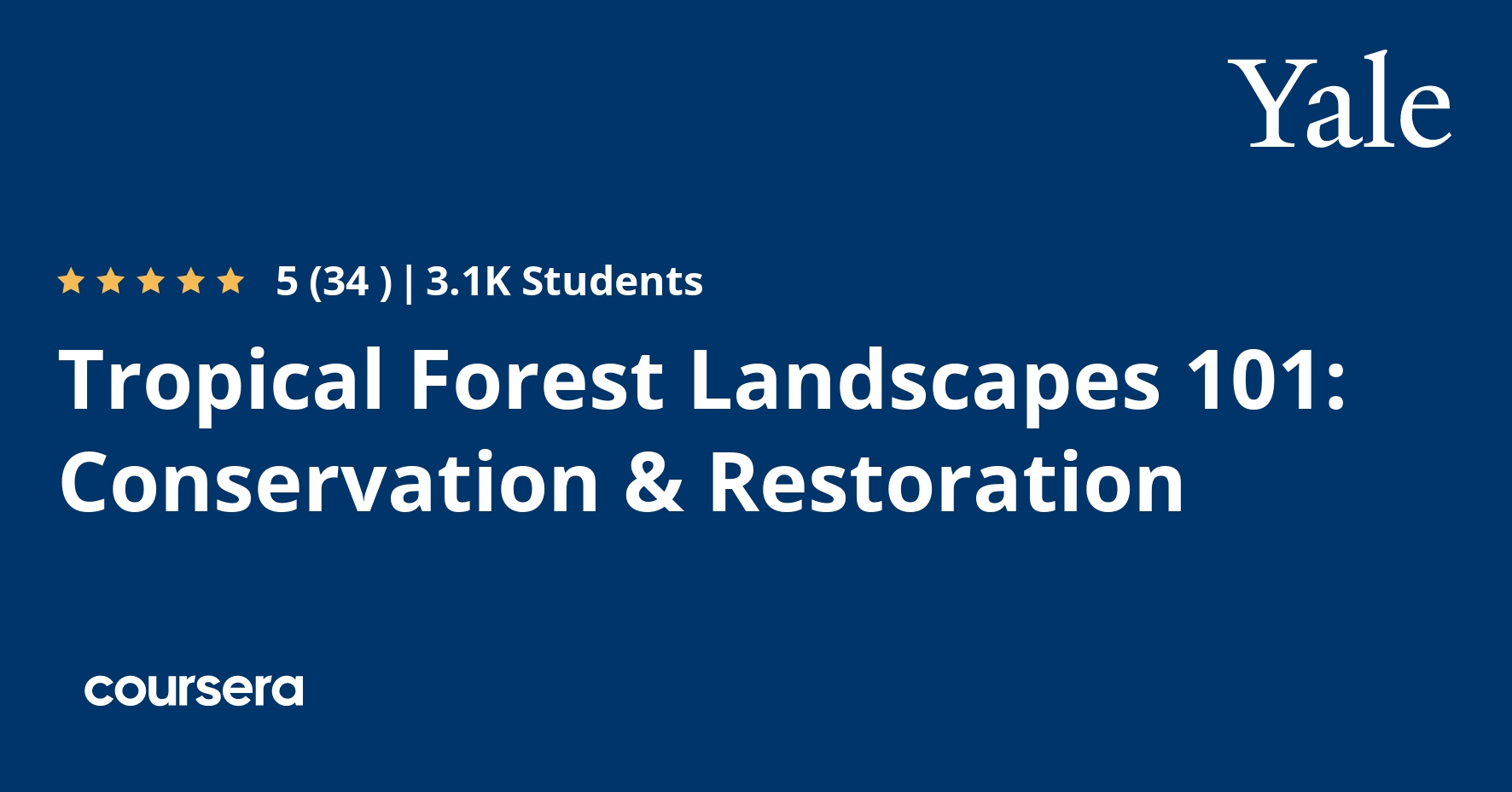Description
Conserving and restoring tropical forest landscapes offers an opportunity to address pressing environmental and social challenges. Effective conservation and restoration initiatives support multiple objectives, including ecosystem functioning, climate change mitigation and adaptation, food security, and economic growth.
This seven-week course explores the technical, social, and funding aspects of this timely topic. You will learn:
1. The importance of tropical forest landscapes and the actors and motivations driving restoration and conservation efforts.
2. How tropical forest ecosystems work, and how they relate to climate change and biodiversity.
3. Fundamental human dimensions to consider in any project, including human livelihoods and local property rights.
4. Conservation theory and dynamic aspects of conserving species and landscapes.
5. A spectrum of restoration strategies and key considerations for restoration, such as species selection and planting design.
6. How agroforestry systems can integrate trees and production to meet different goals.
7. Basic financial concepts and potential sources of conservation and restoration funding.
The materials in this course offer a selection of key content from the Yale School of the Environment and Yale Environmental Leadership & Training Initiative’s yearlong Tropical Forest Landscapes: Conservation, Restoration & Sustainable Use online certificate program.
What you will learn
Why conserve and restore tropical forest landscapes?
Welcome to the course! In this module, we will begin exploring what tropical forest landscapes are and why they are important. We will also discuss threats to forest landscapes and motivations for conserving and restoring them.
Ecology of tropical forest landscapes
In this module, we will examine tropical forests from an ecological lens. Understanding how natural ecological processes work will lay the groundwork for knowing how to develop effective conservation and restoration techniques, which we will cover in later modules.
Social considerations for restoration and conservation
Now that we have examined the ecological forces that shape tropical forest landscapes, we will shift our focus to people. In this module, we will consider how people are affected by and affect tropical forest landscapes and how considering local access to resources is a pivotal consideration when considering effective, equitable interventions.
Conservation strategies
In this module, we will look at some fundamental conservation concepts. At its core, conservation involves protecting existing habitat or forest cover, but selecting where to prioritize protection, is more complicated. Conservation decisions depend on a suite of considerations, such as how one measures biodiversity, how one considers changes in the landscape over time, and how conservation affects other goals, such as ecosystem function.







